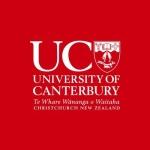GNS's Martin Reyners on Canterbury earthquakes at UC lecture next week
Christchurch has had 58 earthquakes over magnitude 5.0 since September 4, 2010 and GNS Science says there is a 72 percent probability of an earthquake between 5.0 and 5.4 in the next 12 months.
They also say there is 31 percent probability of a 5.5 to 5.9 earthquake in the wider Christchurch area over the next 12 months, and only a three percent chance of an earthquake over 6.5.
Martin Reyners, principal scientist at GNS Science in Wellington, will give a public lecture on earthquakes at the University of Canterbury next Wednesday, October 3. He will explain why Canterbury has faced a long series of aftershocks, why the fault ruptures produce a lot of energy, and why it is happening at all.
Dr Reyners said he will ask in his lecture what if events 100 million years ago controlled the Canterbury earthquake sequence. The Canterbury earthquakes have raised important questions regarding the seismic hazard of the Christchurch region, he said.
``Such as why has there been a concentration of large aftershocks in the Christchurch area, at the eastern end of the magnitude 7.1 Darfield earthquake rupture? Why has the pattern of faulting been so complex? Why has the aftershock sequence been so prolonged? And why has the shaking from the Darfield earthquake and its larger aftershocks been so strong, compared to most earthquakes of similar magnitude worldwide?’’
Dr Reyners will address these questions in terms of the unusual structure of the Earth’s crust beneath Canterbury, and the response of the crust to the current convergence of the Pacific and Australian tectonic plates.
He has used data from well-recorded Canterbury aftershocks to build a detailed three-dimensional model of the crustal structure of the region. This method is called seismic tomography and is the earthquake equivalent of a medical CAT scan.
``This new crustal model has been used to relocate over 10,000 Canterbury aftershocks. These highly accurate aftershock locations (particularly in depth) provide a much clearer picture of how fault slip during the larger earthquakes was accommodated in the crust.
``When combined with data on geology and rock physics, the three-dimensional model of the crust and the aftershock relocations provide insight in to why and how the Canterbury earthquake sequence happened.’’
Two crustal structures under the central South Island have been largely responsible for controlling the nature of the faulting and the development of the aftershock sequence, he said.
Firstly, a very strong crust underlying the region at a depth of 20 kilometres, which was forced under the edge of the supercontinent Gondwana about 100 million years ago; and secondly, volcanoes on Banks Peninsula which erupted during the period 12-6 million years ago.
The combined effect of these structures has been to produce a very energetic and prolonged aftershock sequence.
Dr Reyners has established an international reputation in studies of earthquakes where one tectonic plate is thrust beneath another.
His other recent work investigates why the plates lock together on certain portions of the North Island subduction (one plate being forced under another) zone, leading to a build-up of strain which will eventually be released in a large earthquake.
His research is wide-ranging, bringing together seismology, GPS geodesy, geological structure, geochemistry and rock physics. This suite of techniques also provides clues as to what happened in the Canterbury earthquake sequence.
